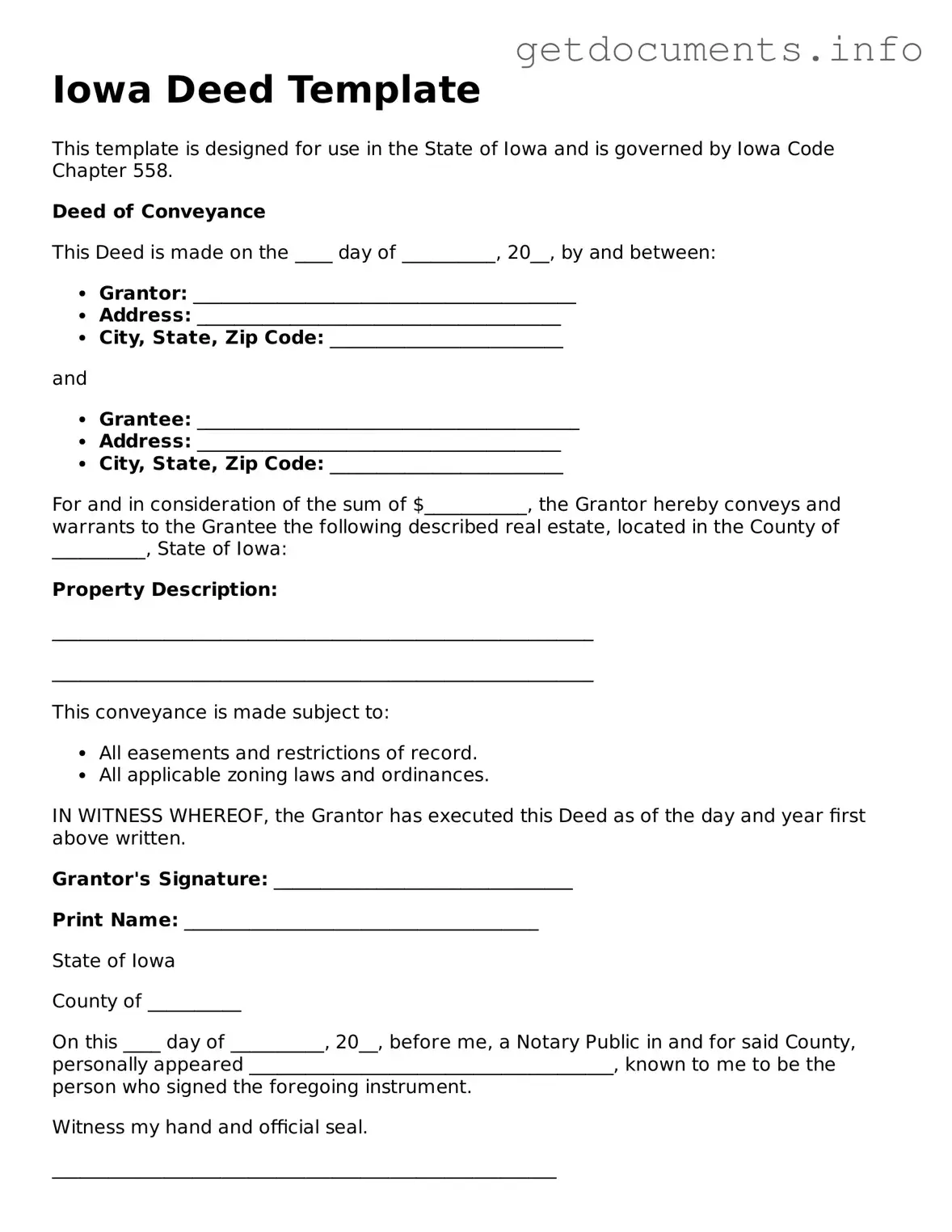In the realm of real estate transactions, the Iowa Deed form plays a pivotal role, serving as a crucial document for the transfer of property ownership. This form encapsulates essential information, including the names of the parties involved, a precise description of the property, and the type of deed being utilized—whether it be a warranty deed, quitclaim deed, or another variant. Each type of deed carries its own implications regarding the rights and responsibilities of the parties, making it vital for buyers and sellers to understand their options. Additionally, the Iowa Deed form must be properly executed, which includes signatures from the grantor and, in some cases, the grantee, as well as notarization to ensure its validity. Once completed, this document must be filed with the appropriate county recorder's office to officially document the change in ownership. Understanding the intricacies of the Iowa Deed form not only facilitates a smoother transaction but also protects the interests of all parties involved, making it an indispensable tool in the real estate landscape of Iowa.
